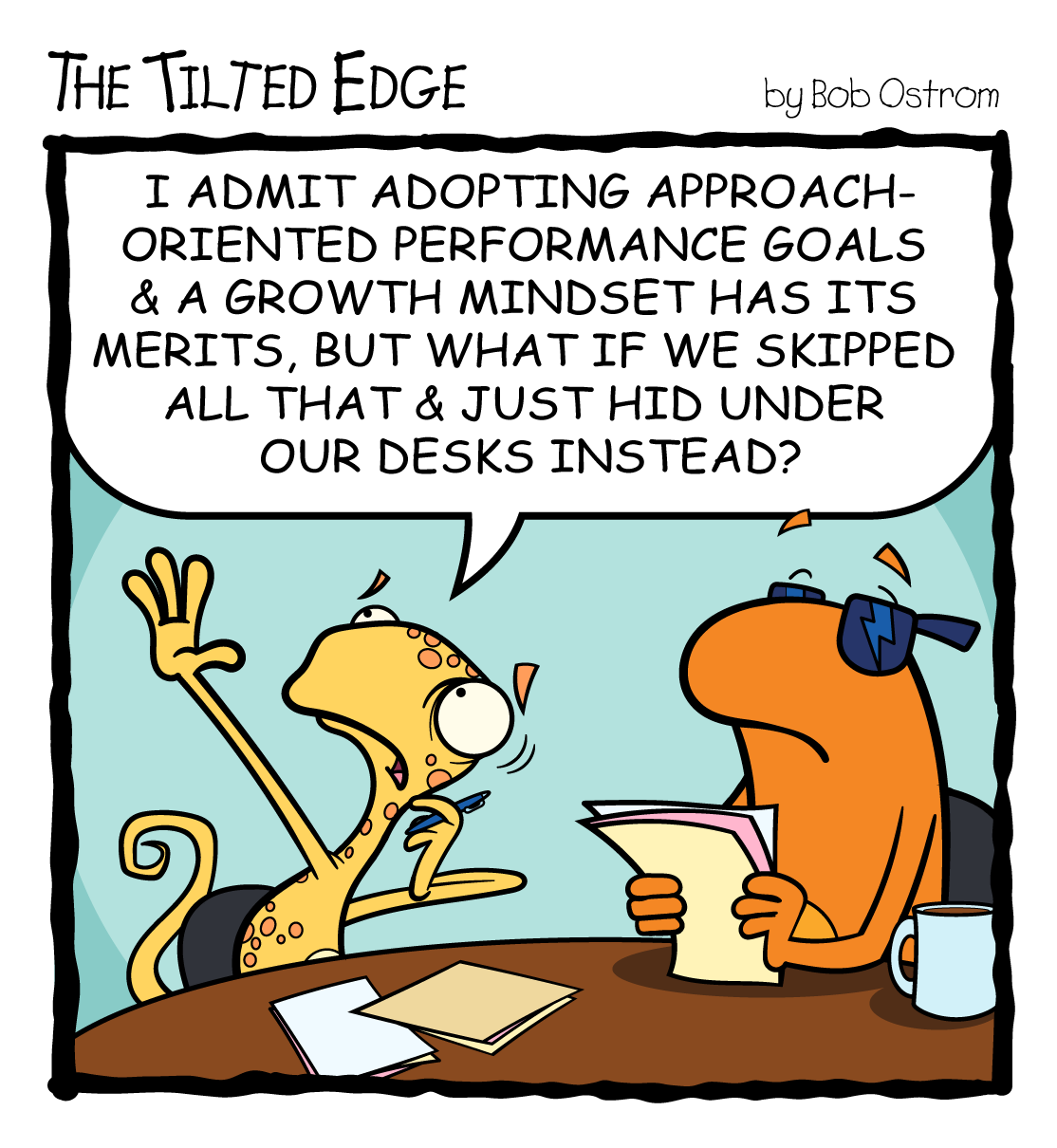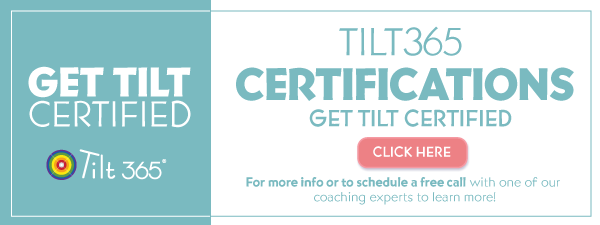

Using training to foster a growth mindset is gaining popularity in educational and work settings. Many people are aware that mindsets can influence outcomes like academic achievement, job performance, and mental health, but cultivating a growth mindset is only the first step. The key to successfully leveraging a growth mindset is knowing how to use it. This article will explain how mindsets can lead to goal achievement and how individuals and organizations can use this information to be successful.
How do mindsets lead to success?
Mindsets are beliefs and assumptions about the malleability of human attributes (e.g., personality, intelligence, bias, character, etc.). A growth mindset is a belief that attributes can be changed, whereas a fixed mindset is a belief that an attribute is unchangeable. Research has established that a growth mindset can be beneficial, but the evidence regarding the size of the benefit has been inconsistent. This inconsistency shows that some conditions change the utility of having a growth mindset. Logically, it makes sense that just believing you are capable of change doesn’t mean you will actually put in the work required to change. A growth mindset is an excellent first step, but alone it isn’t sufficient for success. There are many steps between a belief and meeting a goal. Thus, rather than focusing on the overly simplistic notion of whether you should develop a growth mindset, the question becomes how do we best utilize those steps between a growth mindset and an outcome.
The way mindsets affect outcomes can be understood within the framework of how people pursue goals. A mindset is a belief that you can develop and change (or not), and the goal is the outcome you are working toward. The steps between a mindset and achieving a goal are the type of goal, strategies for pursuing the goal, and reactions to progress (or lack thereof).
Goal Type
There are four different types of goals: performance-avoidance, performance-approach, learning-avoidance, and learning-approach. Each type is a different combination of an outcome (performance or learning) and direction (approach or avoid). Performance goals are focused on demonstrating competency, whereas learning goals are focused on improving skills. Approach-oriented goals are focused on gaining a desired outcome, whereas avoidance-oriented goals focus on preventing a negative outcome. When you combine these two ideas, it creates four distinct types of goals. An example of a performance-avoidance goal is wanting to not look stupid in front of your colleagues. An example performance-approach goal would be aiming to perform a task better than your colleagues. A learning-avoidance goal is wanting to participate in an optional workshop because you are afraid of missing a chance to learn a new skill, and participating in a workshop so that you can learn as much as possible is a learning-approach goal. The differences between the types of goals are more than just semantic. The different types of goals tend to lead to varying levels of success in different situations. In general, approach-oriented goals are more effective than avoidance-oriented goals. The effectiveness of performance-approach versus learning-approach depends on the situation and your level of skill in the specific task.
People with a growth mindset significantly more likely to choose a learning-approach goal, and people with a fixed mindset are more likely to choose a performance-avoidance goal. This means that people with growth mindsets tend to seek opportunities to learn and grow their skills, but people with fixed mindsets focus on trying to keep themselves from looking incompetent. Research has shown that approach-oriented goals are positively related to achievement, and avoidance-oriented goals are negatively associated with achievement. So, one way a growth mindset can lead to better goal achievement is by increasing the chance that people choose the more effective learning-approach goal type.
Strategies
After setting a goal, people have to decide what behaviors are needed to accomplish the goal. There are two strategies that people tend to use when choosing behaviors to meet their goals: mastery-oriented and helpless-oriented. People with a fixed mindset tend to use a helpless-oriented strategy when faced with challenging goals. A helpless-oriented strategy includes thoughts, feelings, and behaviors that help the person protect their self-image or feel like they aren’t a failure. If the person believes they cannot change, then failing to meet a goal is equated to fundamentally lacking the ability to succeed. This can lead to a fear of even accepting challenging goals, but when there is no choice in the goal, people with a fixed mindset can respond by focusing on finding a way to protect their self-concept instead of trying to meet the goal. For example, someone could procrastinate working on an important project and not leave enough time to do it well. Then if they fail, they can think, “I just didn’t have enough time” instead of “I’m not capable.”
People with a growth mindset do not view failure as a threat, which allows them to choose a mastery-oriented strategy to approach goals. Mastery-oriented strategies are thoughts, feelings, and behaviors that encourage learning and persistence. This strategy is possible because people with a growth mindset are not as threatened by challenges and view challenges as a chance to learn. “Failure” for them is simply necessary feedback so that they can learn to do better the next time. For example, after receiving negative feedback on a rushed project, someone using a mastery-oriented strategy might devote more time, not less, to the next one. Unsurprisingly, increasing persistence and other mastery-oriented strategies are related to higher goal achievement than helpless-oriented strategies. Thus, a growth mindset can lead to success by encouraging people to choose mastery-oriented strategies to accomplish their goals.
Goal Monitoring
Once you have started working toward a goal, you will likely receive some kind of feedback about your progress. Feedback elicits an emotional reaction and affects your expectation of reaching your goal. Positive feedback (progressing toward the goal) leads to positive emotions (e.g., excitement) and the expectation of meeting the goal. The potential problem comes when people receive negative feedback. If they are not progressing or not progressing fast enough, then they could feel negative emotions (e.g., anxiety, sadness, etc.) and begin to believe that they cannot reach their goal. This reaction is more common for someone with a fixed mindset. Negative emotions and negatively evaluating your likelihood of meeting your goal reduce goal achievement. For someone with a growth mindset, negative feedback is useful information. They feel less negative emotions and still believe they can successfully reach their goal, which increases the likelihood of goal achievement. Thus, a growth mindset can also affect goal achievement by creating more positive evaluations of feedback as people monitor their progress.
How individuals can use mindsets
You can use the knowledge of these ways that growth mindsets can lead to success in meeting your goals. However, you should use this approach only for goals that matter to you. No one can master everything. Sometimes it makes sense to stop pursuing a goal, not because you don’t think you could improve, but because another goal is more valuable. You might believe that you can increase your musical skills and master the guitar, and you probably can, but if that is not important to you, then it is okay not to be persistent and choose a goal that is a better fit for you. For the goals that matter:
- Cultivate a growth mindset. Although a mindset alone isn’t enough, it is the starting place. Many attributes are malleable. People have a fantastic ability to adapt and change that shouldn’t be overlooked. Attributes like intelligence, personality, and anxiety can all be developed. More specific actions like dieting and negotiation skills can be developed as well. Believing this is the first step for development.
- Choose approach-oriented goals. We may not always pay attention to the goals we set, but effective goals are powerful motivational tools that we can use to our advantage. When you select a goal, focus on gaining something instead of preventing a loss. Choosing between performance-approach and learning-approach goal depends on the situation. In general, choosing a learning-approach goal is more appropriate when you don’t already have the skills you need to meet your goal.
- Choose a mastery-oriented strategy. Don’t give yourself excuses for why you may not succeed. Failure is only temporary, and it provides valuable information for how you can succeed next time. Welcome feedback and be persistent.
- Seek feedback. Continuous feedback can help ensure that you are progressing at the rate you need to meet your goals. This information will help keep you on track and allow you to make changes if you are not moving fast enough.
- Monitor your response to feedback. Not progressing as fast as you want can often be disheartening, and it is okay if you have an initial adverse reaction. But you can’t let yourself get stuck in the negativity. Enjoy the challenge, and focus on improving instead of proving that you are already good enough.
How organizations can support growth mindsets
Organizations should foster a culture that supports growth mindsets because cultivating a growth mindset can be difficult in an environment that doesn’t support it. If an organization’s culture focuses on meeting performance standards and does not leave room for growth, then individual growth mindsets will not likely affect goal achievement. The impact of culture has been demonstrated clearly in an educational context. Students in schools with norms that did not support seeking challenge and learning did not benefit as much from a growth mindset. People who are in a context that does not support growth and punishes the “failure” that comes with setting difficult learning goals are incentivized to do the minimum possible to meet their goals and not risk the punishments associated with taking a chance to do more. This type of culture not only discourages benefits related to growth mindsets but does not have the space for experimentation and psychological safety needed for innovation. Even in organizations that are not focused on innovation, supporting growth mindsets is important. Employee growth mindsets have been linked to outcomes that matter to organizations, such as higher job performance, better relationships with managers, creativity, more accurate performance appraisals, and more leadership behaviors.
So what can organizations do to cultivate a culture that supports growth mindsets? First, organizations should provide training on growth mindsets for employees. This training is especially important for leaders who will choose whether to reinforce or undermine growth mindsets. Leaders with a growth mindset can more effectively coach their subordinates and encourage their subordinates to contribute to the organization. In addition, framing most training and development programs within the context of a growth mindset can help employees avoid perfectionism and transfer knowledge more effectively from training to applications in the workplace.
In addition to focused training and development efforts, organizations should use their performance management systems to build a culture of continuous feedback. If feedback is ongoing and framed with a growth mindset, then it could be less performance-focused and threatening than yearly evaluations where feedback is too late for development. Performance management is a crucial process in shaping organizational culture. No matter what the organization claims to value, organizations get what they reward. If you say a culture of learning and growth matters, but evaluate people annually by strict performance goals and provide no developmental feedback, you aren’t really reinforcing growth. Comprehensive performance management systems shouldn’t omit accountability, but there should also be recognition of improvement and growth.
Closing
Individuals and organizations can benefit from cultivating a growth mindset, if they understand how. This belief in one’s ability to change can lead to goal achievement by influencing goal choice, goal pursuit strategies, and reactions to feedback. Individuals can use this information to best leverage a growth mindset for success. Organizations can use training and performance management systems to cultivate a culture that supports learning and growth to support employee growth mindsets.





